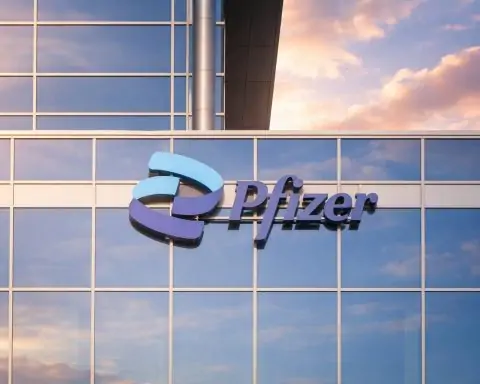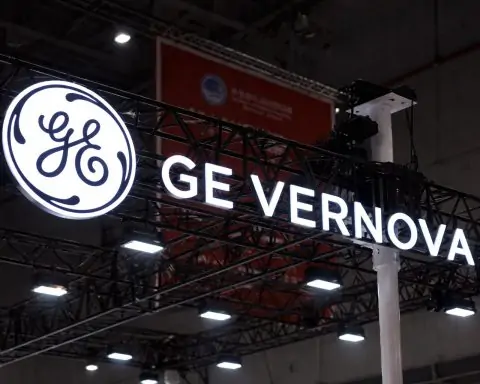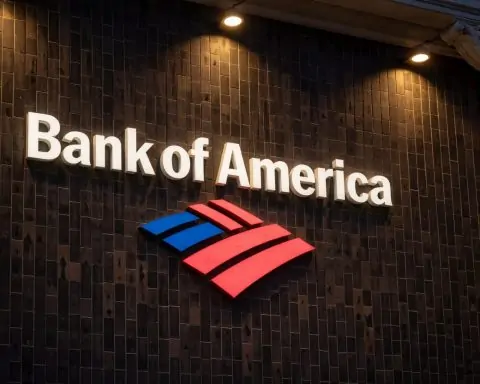- Wild Price Swing: Vivakor’s stock (NASDAQ: VIVK) closed around $0.26 on Oct. 23 (up ~5.7% that day) and then spiked ~40% to ~$0.37 in pre-market trading on Oct. 24 [1]. The jump extends a volatile rally – on Oct. 15, VIVK had already surged about 75% in one day (from ~$0.19 to ~$0.28) on massive trading volume after a funding deal was first announced [2].
- $40M Oil Trading Credit Line: The company closed a $40 million commodity intermediation credit facility on October 23 to expand its crude oil trading operations [3]. The one-year facility, backed by a single wholesale partner, provides up to $40M in letters of credit, surety bonds, and other credit support for Vivakor’s oil purchases – a move management says will strengthen liquidity and drive “accretive” revenue growth as trading scales up [4].
- Fresh Funding Infusions: Beyond the credit line, Vivakor raised approximately $5.0 million in new capital through a direct share offering on Oct. 16 [5]. It also inked a late-September term sheet for up to $23 million in convertible preferred equity financing to fuel growth in its oil marketing and remediation businesses [6]. These deals aim to bolster working capital and fund expansion of Vivakor’s energy infrastructure network.
- Shareholder Moves: The company postponed a special dividend (payable in shares of its affiliate Adapti, Inc.) to October 31, 2025 [7]. The payout is modest – about 0.0074 Adapti shares per Vivakor share (worth only a few cents each, totaling ~$0.2–$0.5 million) [8] [9]. Meanwhile, Vivakor received a 180-day Nasdaq extension (to March 2026) to regain compliance with the $1.00 minimum share price rule [10]. If the stock doesn’t trade back above $1, management has indicated a reverse stock split may be used to avoid delisting [11].
- Analyst Outlook: Company executives are optimistic – CEO James Ballengee calls Vivakor “at an inflection point” and expects the new capital to “create synergies” and set up long-term value across its divisions [12]. Some forecasts are bullish as well: one algorithmic model projects VIVK could average ~$0.76 by end-2025 (implying ~+159% upside from current levels) [13]. However, technical analysts warn the stock still “holds several negative signals” in a falling trend [14], and Vivakor remains a high-risk micro-cap with ongoing losses and heavy dilution of its share count (the company lost ~$23M in 2024 and has a market cap under $10M) [15].
Stock Price Jumps on Funding News
Vivakor’s stock price is on a rollercoaster ride. After spending much of October trading in the $0.20 range, VIVK leapt 5.69% to $0.26 by the close of Thursday, Oct. 23 – and then skyrocketed to $0.37 in early pre-market trading on Oct. 24 [16]. The surge came immediately after Vivakor confirmed closing a major $40 million oil-trading credit facility, news that Benzinga reports was the catalyst for the jump [17]. This isn’t the first explosive move for the stock lately: on October 15, Vivakor shares spiked from about $0.19 to $0.37 intraday (a ~75% jump) before settling near $0.28 by that day’s close [18]. That mid-October rally was fueled by the initial announcement of the same financing deal and saw trading volumes erupt to roughly 230 million shares in a single day – hundreds of times the stock’s typical volume [19].
Even after these gains, VIVK remains a penny stock. The shares are still trading at a fraction of where they began the year – for context, Vivakor hit a 52-week high of around $1.68 earlier in 2025 before sliding to the sub-$0.20 lows prior to the recent rebound [20]. In other words, the stock’s current ~$0.30–$0.40 level is well below past peaks and far under Nasdaq’s $1.00 minimum price requirement, highlighting the challenges Vivakor faces in sustaining momentum. The wild swings also underscore the speculative nature of this micro-cap stock, which can double in a day on news and just as easily pull back amid profit-taking. Investors have now seen VIVK spike twice in October on the $40M deal buzz – raising the question of whether this nascent uptrend can hold.
$40M Oil Deal Seals Vivakor’s Liquidity Boost
Vivakor’s latest rally has been driven by concrete news: the company closed a $40 million commodity intermediation facility to finance its crude oil trading operations [21]. Announced via GlobeNewswire on Oct. 23, this credit facility had been in the works for over a year and was previously unveiled as a term sheet on Oct. 15 with a planned closing by the end of October [22]. Now finalized ahead of schedule, the one-year agreement provides Vivakor’s trading subsidiary (Vivakor Supply & Trading, or VST) with up to $40 million in credit support for purchasing physical crude oil [23]. In practical terms, the unnamed wholesale partner will underwrite Vivakor’s oil transactions by offering instruments like letters of credit, surety bonds, cash deposits, and guarantees – essentially financing the oil inventory and working capital needed for Vivakor to buy, move, and sell larger volumes of crude [24]. VST will still handle the logistics (using Vivakor’s own fleet of trucks, storage terminals, and a pipeline network) and find buyers for the oil, but the hefty upfront cost of the oil itself can be covered by this credit line.
Company leadership is touting the deal as transformational. “The closing of this transaction… effectively launches Vivakor’s trading platform,” said CEO James Ballengee, noting it was “more than a year in the making” [25]. Ballengee emphasized that the facility should help integrate more supply across Vivakor’s trucking fleet and terminals and “drive immediate accretive revenue” in the crude trading business [26]. Chief Financial Officer Kimberly Hawley echoed that sentiment, stating the $40M facility “significantly strengthens our liquidity position” and gives flexibility to scale trading and logistics operations efficiently [27]. In short, this credit line effectively beefs up Vivakor’s ability to act as a middleman in the oil market – the company can now purchase and transport much greater quantities of crude oil than it could with its own cash, which could translate into higher revenues (if those barrels are flipped for a profit). The market’s enthusiastic reaction to the deal (as seen in the stock pop) suggests investors likewise view it as a potential lifeline for growth.
This $40M facility is one of several funding moves Vivakor has made in recent weeks to shore up its finances. On Oct. 16 – the day after the initial credit line announcement – the company raised roughly $5.0 million in gross proceeds through a registered direct offering [28] [29]. In that deal, a single institutional investor purchased 8.42 million shares of Vivakor common stock along with 14.69 million pre-funded warrants (which are essentially equivalent to shares) at a price set “at-the-market” [30]. The offering, which closed on Oct. 17, provided a quick cash infusion for working capital, albeit at the cost of significantly diluting existing shareholders (the new shares and warrants amount to over 23 million potential additional shares, increasing the share count by roughly 40%). And that’s not all – in late September, Vivakor had also signed a term sheet for a much larger capital raise: up to $23 million via convertible preferred stock [31]. According to the company, that preferred equity deal (if finalized) would inject funds into two key areas of expansion – $15M earmarked for its crude oil marketing/trading segment and $5M for its remediation services, with the remainder bolstering general corporate needs [32]. Notably, the preferred investment is tied to an operational partnership as well (it comes with exclusive trucking commitments from the investor, aiming to integrate with Vivakor’s logistics platform) [33]. In combination, these financing initiatives – the $40M credit line, the $5M equity raise, and the prospective $23M preferred deal – represent a multi-pronged effort by Vivakor to raise liquidity and fuel growth after a period of financial strain.
Aside from raising cash, Vivakor has taken some unusual steps to reward shareholders (and possibly attract new ones). The company declared a special dividend in the form of stock in one of its private affiliates, Adapti Inc., to be distributed to Vivakor shareholders. Originally slated for September, the dividend payment was rescheduled to October 31, 2025 to ensure all eligible investors could be accounted for [34]. The payout equates to about 0.0074 shares of Adapti per VIVK share – a tiny fraction that in total represents only a few hundred thousand dollars in value across all Vivakor shares [35]. Analysts have noted this amounts to only a few cents worth of stock per share and offers “minimal tangible benefit” to VIVK investors in the grand scheme [36]. Nonetheless, it’s an unconventional move that underscores Vivakor’s creative approach to delivering some return to shareholders despite its cash constraints. At the same time, the company has been forced to confront the more pressing issue of its low stock price – in September, Vivakor obtained a 180-day extension from Nasdaq giving it until March 16, 2026 to cure its share price deficiency (Nasdaq rules require a minimum $1.00 bid price) [37]. If the stock doesn’t organically rise above $1, a reverse stock split is on the table as a last resort to boost the price and maintain the Nasdaq listing [38]. Management has openly floated that possibility, which could reduce the number of shares and temporarily lift the price, but such actions often come at the cost of reduced liquidity and can signal distress. In essence, Vivakor is attempting a high-wire act – raising cash, pursuing growth opportunities, and appeasing shareholders – all while trying to elevate its penny-stock valuation and avoid a delisting.
Experts Weigh In: Optimism vs. Skepticism
With Vivakor’s flurry of deals and stock gyrations, market commentators are divided on what comes next. Company insiders, unsurprisingly, are optimistic. They argue that the new credit facility and incoming capital have repositioned Vivakor for a turnaround. “Management is in growth mode, not retreat,” one TS² analysis noted, highlighting CEO Ballengee’s view that these combined deals will “create synergies across all of our operating divisions” and set the stage for “long-term value creation” [39] [40]. Newly installed CFO Kimberly Hawley (an energy sector veteran brought on in August) described Vivakor as “at an inflection point” and has prioritized improving financial discipline as fresh funds come in [41]. Bulls in the market point to the fact that Vivakor now has access to significantly more capital (between the $40M credit line and other financings) which could allow it to substantially scale up its oil trading, transportation, and remediation businesses. If the company can leverage these resources effectively, revenue could climb rapidly – and some believe the stock could follow. Indeed, at least one predictive model is forecasting major upside: StockScan.io projects VIVK’s share price might average around $0.76 by the end of 2025, which would be well over double the recent trading levels [42]. That model even envisions the stock potentially back above $1 by 2027 if Vivakor’s expansion plans bear fruit [43]. From this bullish perspective, the dramatic spike in mid-October is just “the start of a sustained recovery”, as the influx of capital enables Vivakor to grow its oil throughput, improve efficiency, and possibly swing toward profitability in the coming years [44].
On the other side of the debate, bearish analysts emphasize the risks that still overhang this company. Technical analysis of VIVK remains grim despite the recent bounce. The stock is still trading in mere pennies and has been in a prolonged downtrend. One market research site, StockInvest.us, warned that Vivakor “holds several negative signals and is within a very wide and falling trend,” ultimately giving the stock a “negative evaluation” even after the October rally [45]. In plainer terms, the chart is broken – VIVK has a long history of destroying shareholder value (down over 80% in the past year) [46] and any short-lived pops haven’t reversed that broader pattern. Fundamental metrics also flash caution. Vivakor may have generated ~$89.8 million in revenue last year, but it lost about $23.0 million in 2024, nearly doubling its losses from the year prior [47]. The company has relied on issuing stock and convertible notes to stay afloat (in fact, it recently entered a forbearance agreement to delay debt payments and issued new convertible notes to its lender in early October) – maneuvers that, while keeping the lights on, have dramatically expanded the share count and diluted existing investors [48]. Every new financing deal (the $5M equity raise, the potential $23M preferred stock) means more shares outstanding chasing the same business, which can weigh down the share price. Bears also point to the Nasdaq compliance issue: with VIVK still around 30–40 cents, it’s a long way from the $1 threshold, and a forced reverse stock split could be in the cards by spring if organic appreciation doesn’t occur [49] [50]. Such reverse splits often lead to initial pops followed by renewed declines as the fundamental challenges remain. Additionally, the much-touted Adapti stock dividend is essentially a token gesture – amounting to only a few cents per Vivakor share – and offers “minimal tangible benefit” to shareholders’ bottom line [51]. Given these factors, skeptics argue that any rallies in a micro-cap like VIVK could prove fleeting. They caution that until Vivakor demonstrates it can actually turn a profit (or at least achieve positive cash flow) in its expanded operations, the stock’s spikes are built more on hype than on solid ground and thus could “be followed by steep falls” [52]. In short, the bearish camp sees Vivakor as a high-risk bet, with significant execution hurdles to overcome and a stock price that might not stabilize until the company’s financial performance markedly improves.
Future Outlook and Market Context
Going forward, Vivakor faces a pivotal few quarters that will determine whether its recent moves truly mark the start of a turnaround or simply a brief respite. The bullish case is that with a beefed-up war chest – $40 million in trade credit, new cash from investors, and another infusion potentially on the way – Vivakor can aggressively grow its core businesses. The company’s focus on integrating its transportation fleet, oil terminals, and remediation units could yield greater efficiency and throughput, especially now that it can afford to purchase more oil inventory. If oil prices cooperate and remain firm, Vivakor’s expanded trading operation might generate significantly higher revenues (and perhaps even gross profits) in the coming months, which in turn could boost its stock and help it regain Nasdaq compliance without drastic measures. Under those conditions, it’s conceivable that VIVK’s share price could continue climbing – for instance, reaching that ~$0.75 level some optimists have predicted [53] – as investors reprice the company upward on evidence of real growth.
The bearish case, however, urges caution. Vivakor’s management now needs to execute almost flawlessly with the tools and capital it has assembled. Any stumble – whether trouble in drawing on the $40M facility, delays or issues with the $23M preferred funding, or simply failure to turn higher trading volume into actual profits – could cause confidence to evaporate. The clock is ticking on the Nasdaq deadline as well; by early 2026 the company will likely have to enact a reverse split if the stock remains under $1 [54]. Such a scenario could be a double-edged sword: it might preserve the listing, but reverse splits often erode shareholder value further if not accompanied by real improvements in the business [55]. Moreover, Vivakor’s continual need to raise capital raises questions about dilution: each new batch of shares or convertible notes makes it harder for the stock to run higher, as there are simply more shares in circulation. External market conditions may not be in Vivakor’s favor either. Crude oil prices have been softening – U.S. oil futures are down roughly 5% over the past month [56] – which can be a headwind for energy companies’ earnings and investor sentiment. If the broader oil & gas sector faces pressure due to falling oil prices or economic slowdowns, it could dampen the upside for a small player like Vivakor, regardless of its internal initiatives. That said, as a micro-cap stock, VIVK often trades more on company-specific catalysts than on macro trends – meaning big news (like deals or contracts) can outweigh the influence of oil price fluctuations in the short term.
Bottom line: Vivakor, Inc. has engineered a dramatic comeback story for its stock this October, with a string of funding deals igniting speculative fervor. The company’s bold steps – securing a $40M oil trading credit line, raising new cash, and pursuing strategic partnerships – have given bulls plenty to latch onto, and the stock’s sudden leaps reflect a hope that a genuine turnaround is underway. Yet, the risks remain considerable: Vivakor is still losing money, its share price is precariously low, and skepticism abounds about whether this tiny firm can successfully capitalize on the opportunities it’s created for itself. The coming weeks and months will be critical. Investors and analysts will be watching for tangible results – higher revenues, improved margins, progress toward positive earnings – to validate the recent optimism. In the meantime, Vivakor’s stock will likely continue to trade on headlines and sentiment, swinging sharply with each development. For those following the story, the key question is whether VIVK’s latest rally is the start of something bigger or simply a brief spark before reality sets in. On that, the market’s jury (of bulls and bears) is still decidedly split, making Vivakor one of the more intriguing and volatile tickers to watch in the small-cap energy space.
Sources:
- Vivakor closes $40M oil trading facility – GlobeNewswire/Yahoo Finance (Oct 23, 2025) [57] [58]
- Vivakor $5M equity offering and funding deals – GlobeNewswire (Oct 16 & Sep 29, 2025) [59] [60]
- Stock surge and trading data – TS² TechStock, Benzinga (Oct 15–24, 2025) [61] [62]
- Executive quotes on $40M deal – Benzinga (Oct 24, 2025) [63] [64]
- Analyst commentary and forecasts – TS² TechStock analysis (Oct 15–16, 2025) [65] [66]
- Technical and financial outlook – TS² TechStock and StockInvest.us (Oct 2025) [67] [68]
- Oil price trend – TradingEconomics (Oct 24, 2025) [69]
References
1. www.benzinga.com, 2. ts2.tech, 3. www.stocktitan.net, 4. www.stocktitan.net, 5. www.globenewswire.com, 6. ts2.tech, 7. ts2.tech, 8. ts2.tech, 9. ts2.tech, 10. ts2.tech, 11. ts2.tech, 12. ts2.tech, 13. ts2.tech, 14. ts2.tech, 15. ts2.tech, 16. www.benzinga.com, 17. www.benzinga.com, 18. ts2.tech, 19. ts2.tech, 20. ts2.tech, 21. www.stocktitan.net, 22. ts2.tech, 23. www.stocktitan.net, 24. www.stocktitan.net, 25. www.benzinga.com, 26. www.benzinga.com, 27. www.benzinga.com, 28. www.globenewswire.com, 29. www.globenewswire.com, 30. www.globenewswire.com, 31. ts2.tech, 32. ts2.tech, 33. ts2.tech, 34. ts2.tech, 35. ts2.tech, 36. ts2.tech, 37. ts2.tech, 38. ts2.tech, 39. ts2.tech, 40. ts2.tech, 41. ts2.tech, 42. ts2.tech, 43. ts2.tech, 44. ts2.tech, 45. ts2.tech, 46. www.benzinga.com, 47. ts2.tech, 48. ts2.tech, 49. ts2.tech, 50. ts2.tech, 51. ts2.tech, 52. ts2.tech, 53. ts2.tech, 54. ts2.tech, 55. ts2.tech, 56. tradingeconomics.com, 57. www.stocktitan.net, 58. www.stocktitan.net, 59. www.globenewswire.com, 60. ts2.tech, 61. ts2.tech, 62. www.benzinga.com, 63. www.benzinga.com, 64. www.benzinga.com, 65. ts2.tech, 66. ts2.tech, 67. ts2.tech, 68. ts2.tech, 69. tradingeconomics.com










